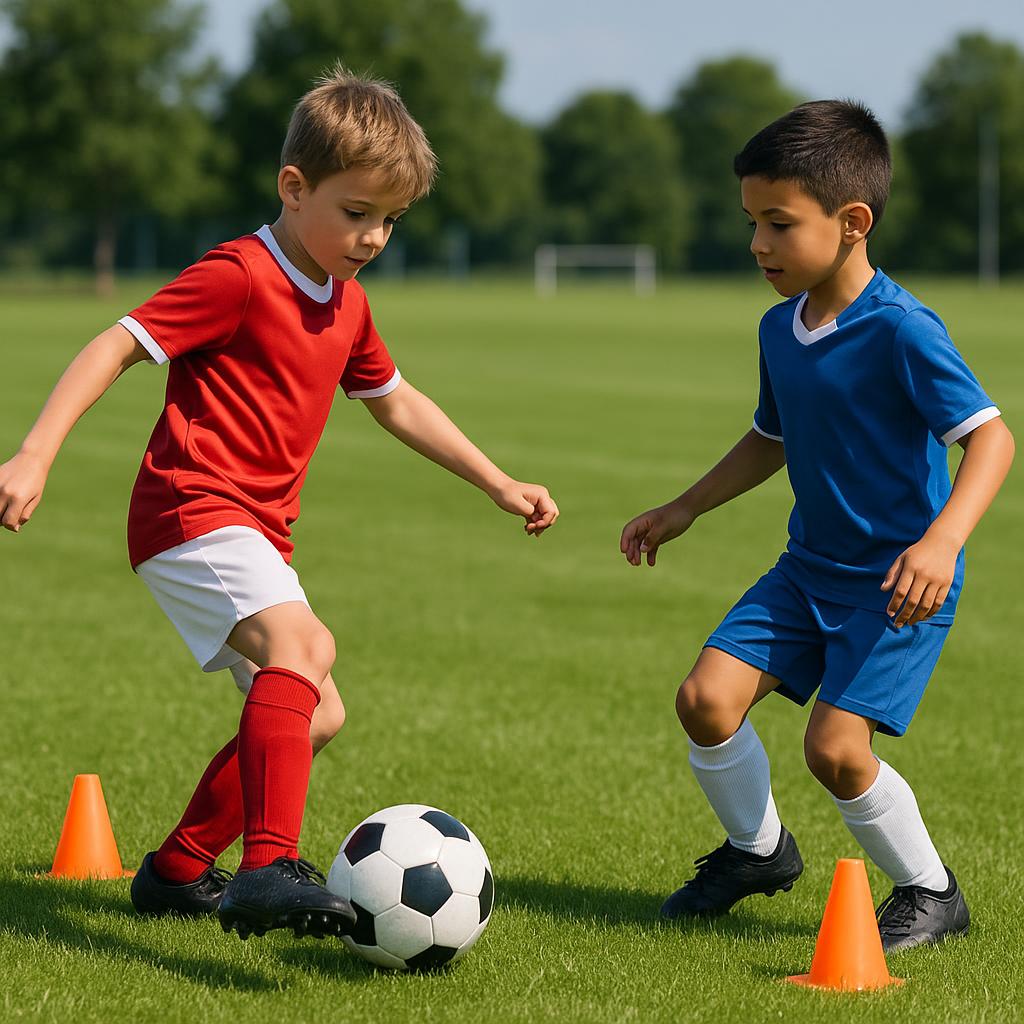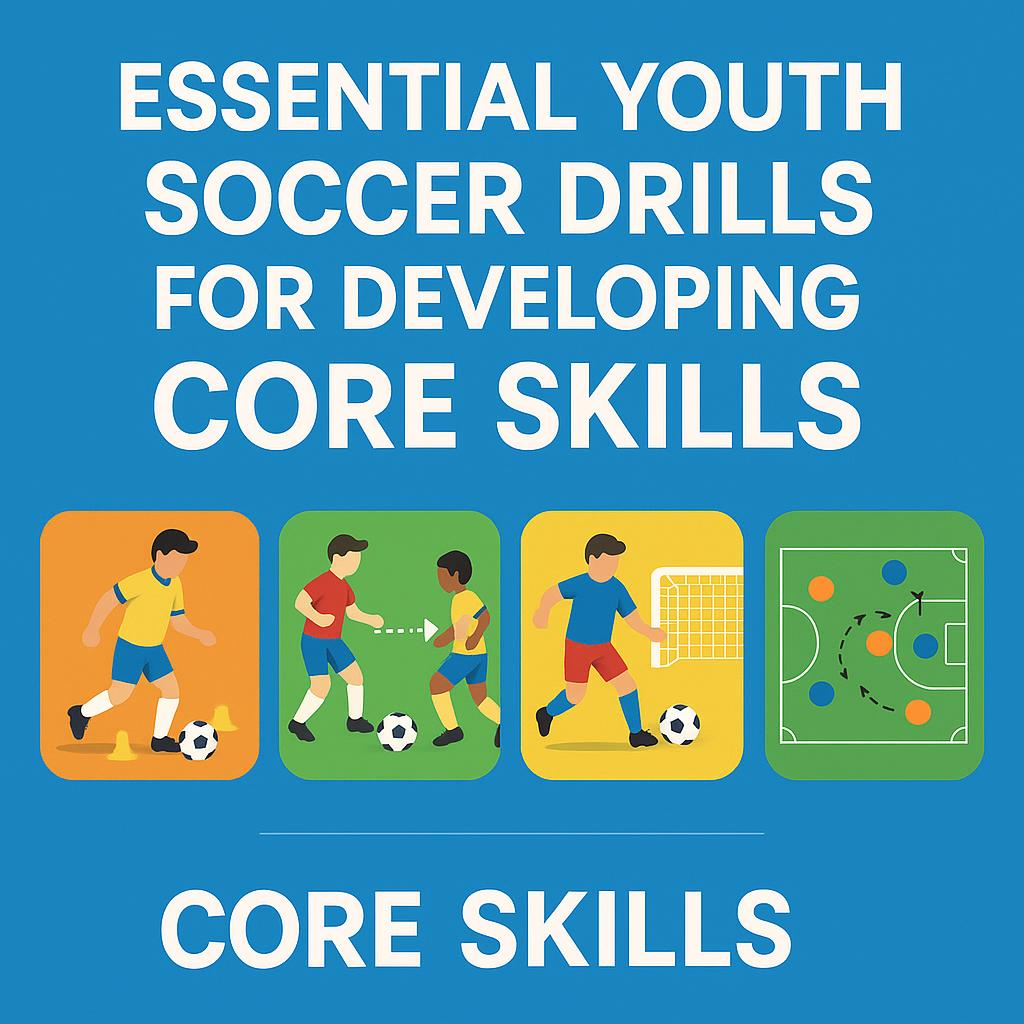Developing core skills in youth soccer is fundamental for every aspiring player. It sets the stage for their long-term success and enjoyment of the beautiful game. Focusing on key areas like passing, dribbling, shooting, and spatial awareness from a young age can build a strong foundation. These skills are not just about individual brilliance, they are about building teamwork, understanding the game, and fostering a love for soccer.
The Foundation: Passing Drills
Passing is the heartbeat of soccer. It allows players to move the ball effectively, create opportunities, and maintain possession. For young players, the focus should be on accuracy, touch, and understanding when and where to pass.
Consider the 'Tick-Tock' Passing drill. This simple exercise involves two players standing about 5-10 yards apart, passing the ball back and forth using the inside of their foot. The goal is to keep the ball moving smoothly, emphasizing a soft touch and accurate delivery. You can introduce variations by asking them to take one touch, then pass, or to alternate feet. This drill refines their basic passing technique and improves their ball control.
Another effective drill is 'Passing Gates'. Set up several pairs of cones or small goals across a training area. Players work in pairs or small groups, attempting to pass the ball through these 'gates'. This encourages precision and teaches them to aim for specific targets, which translates directly to game situations where they need to pass into space or to a teammate's feet. It also subtly introduces the concept of communication as they call for the ball or indicate where to pass.

Mastering the Ball: Dribbling Drills
Dribbling is a player's ability to control the ball while moving, essential for navigating tight spaces, beating defenders, and maintaining possession under pressure. For youth players, the emphasis should be on keeping the ball close, using both feet, and changing direction effectively.
Try a 'Cone Dribble Course'. Arrange cones in a zigzag pattern or a circle. Players dribble through the course, using different parts of their feet, like the inside, outside, and sole. Encourage them to keep their head up as much as possible, developing their peripheral vision. This drill significantly improves their agility and close ball control.
'Red Light, Green Light' Dribbling is another engaging option. Players dribble freely within a designated area. When the coach calls 'Green Light,' they dribble fast. When 'Red Light' is called, they stop the ball completely. This helps players practice quick acceleration and deceleration, crucial skills for adapting to changing game scenarios and enhancing their awareness of their surroundings.
Finding the Net: Shooting Drills
Shooting is the exciting culmination of many offensive plays. For young players, it is about developing proper technique, understanding power versus placement, and building confidence to take shots.
Set up a 'Target Practice' drill. Place small targets, such as empty bins or specific areas marked by cones, in the goal. Players take turns shooting, aiming for these targets. This drill focuses on accuracy and striking the ball cleanly, rather than just power. You can vary the distance to challenge them further.
Another valuable drill is the 'One-Two Combination Shot'. Players work in pairs. One player passes to another, who then plays a quick one-two pass back before taking a shot on goal. This introduces the concept of teamwork in attacking plays and teaches them to combine passing with a quick shot, mirroring real game situations where quick decisions are vital.
Seeing the Whole Picture: Spatial Awareness Drills
Spatial awareness is a player's ability to understand their position on the field relative to teammates, opponents, and the ball. It is about knowing where to be, where to run, and how to create space.
Implement a 'Numbers Game' in a small-sided practice. Divide players into two teams and number each player. The coach calls out a sequence of numbers, and those players enter the field to play a small-sided game, for example, 2v1 or 3v2. This forces players to quickly identify their teammates and opponents, understand the numbers advantage or disadvantage, and make quick decisions about positioning and movement.
'Shadow Play' is also effective. Set up a scenario, like a defensive line or an attacking movement, without a ball. Players move as if the ball were present, practicing their runs, defensive shapes, and covering spaces. This drill hones their understanding of off-ball movement and reinforces the importance of being in the right place at the right time.
Age-Appropriate Training: Tailoring Your Approach
Coaching youth soccer requires an understanding of developmental stages. What works for a 6-year-old might not be suitable for a 12-year-old.
For U6-U8 players, focus should be on fun, individual ball mastery, and developing basic motor skills. Drills should be game-based, simple, and allow for lots of touches on the ball. Complex tactical instructions will only overwhelm them. The primary goal is to make soccer enjoyable and build a positive association with the sport.
U9-U12 players can handle more structured drills and begin to grasp basic group tactics and positional play. Introduce concepts like passing triangles and defensive shapes in a simplified manner. Small-sided games remain crucial for applying skills in a realistic context. Continue to prioritize fun and individual skill development while gently introducing teamwork.
For U13 and older players, the training can incorporate more complex tactics, higher intensity, and physical conditioning. Specialized roles and advanced decision-making become more prominent. However, never lose sight of the foundational skills, as even elite players continually refine their passing, dribbling, and shooting.
Leveraging Technology for Coaching
In today's fast-paced world, technology offers incredible tools to enhance coaching. Imagine being able to visually demonstrate a drill or tactic, not just verbally explain it. This is where modern solutions come into play.

Consider using a tool like the SPLY app, a video soccer coach board available on iOS. This innovative application allows coaches to create and edit tactical boards with ease. You can design custom drills, illustrate player movements, and even add your own face and voice to the board video while you're drawing or moving pieces. This feature is powerful for visual learners. Being able to export these tactical boards as images or full videos means you can easily share complex instructions with your team, even when you're not on the field. It bridges the gap between explanation and understanding, ensuring every player clearly sees and hears the strategy.
By incorporating such tools, you can provide clear, consistent instructions and help your young players grasp intricate concepts more effectively, accelerating their development and fostering a deeper understanding of the game.
Developing strong core skills in youth soccer is a continuous journey. By implementing well-designed, age-appropriate drills for passing, dribbling, shooting, and spatial awareness, coaches can lay a robust foundation for their players. Remember, the goal is not just to create skilled athletes, but to foster a love for soccer, promote teamwork, and build confident, intelligent players. Utilizing modern coaching tools, like the SPLY app, can significantly enhance your ability to communicate these vital concepts, ensuring your team is always ready to learn and excel.
